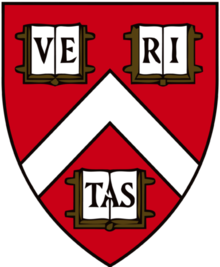Mastering Nonprofit History
0 comment
As someone who believes in the learning power of history, I am increasingly dismayed by how little others value history. While modern-day board members seem to have struggled for decades to grasp just what they are supposed to do and how they should do it, those who populated the earliest boards in America—the boards of educational institutions—figured it out long ago. All we have to do is follow.
I require students in my masters level governance class to read about the history of governing boards in the U.S. and here are some good reasons why:
- Today in the nonprofit sector, Harvard is frequently mentioned in conjunction with fundraising. For one, it has the largest endowment of any nonprofit—$37.6 as the end of 2015. For another, despite this endowment, it continues to receive mega gifts, prompting many to ask the question, “When is enough too much?” This is a fair question for the sector to be asking, particularly in this age of an expanding demand for a relatively stable pool of philanthropic dollars (2% of the GDP). And while Harvard and its alum owe a great debt of gratitude to John Leverett, its ninth, and first lay, president, for establishing its liberal arts tradition, the nonprofit sector owes him a similar debt for another accomplishment—one not often recognized. It was Leverett who insisted upon an independent board for the school, moving away from the historic model of a board of Harvard fellows, residents at the school, and ministers. (Harvard was originally created to educate clergy). He recognized that with overseers who brought vested interests to the board, objective decision-making would be hard to come by and the best interests of the school would not always come first. Today, one important measure of a board is the number of its “independent members.”
- Even back then, Harvard and Yale battled for dominance and pre-eminence. (Ironically, Yale was created by those religious conservatives who thought Leverett was turning Harvard into a liberal institution.) And like Harvard, Yale too, had its own governance struggles. In the 1750s, the president of Yale and a majority of board members decided that board members needed to pass an orthodoxy litmus test. Rev. James Noyes objected, saying a board and the organization would be best served by having a diversity of opinions, and board members voting their consciences, rather than a hegemony of one course of thought. Today, another measure of the strength of a board is its diversity of perspective, experience, background, etc.
- Dartmouth College gave us another important hallmark of boards and nonprofits. Created as a private school, the New Hampshire legislature of 1816 conformed to the dominant mode of thinking that all charitable institutions were public institutions because they were incorporated by the government, served the public and, sometimes even received money from the state, and it “took over” the school—appointing a new board of directors, ousting the old one. Naturally, lawsuits followed, and fast forward to Daniel Webster arguing to the US Supreme Court, lead by none other than Chief Justice John Marshall. Marshall determined that what was salient about a nonprofit was not how it was formed—state incorporation—but its purpose—what did it intend to do– and how its formed—by a group of private citizens or the state. (Here you see the difference between a private institution of higher education and one that is state-run) He pointed out that if the government could interfere in the business of, or take over, the work of a charitable organization at any point it wished, why would philanthropists risk giving their dollars to charities?
- Fortunately, boards of the early 19th century were as worried about being sued as are boards today. So, a group of board members tested their fears. The remains of a trust established to support a man’s wife was bequeathed, 50-50, to Harvard and Massachusetts General Hospital upon her death. At the time of the man’s death, the trust was valued at $50,000; at the time of the wife’s death, it was worth $30,000. The boards of Harvard and Mass General decided to sue, claiming that the managers of the trust had violated their fiduciary duties by making risky investments. Out of this case came the Prudent Man Rule, which states that, “[a]ll that can be required of a trustee to invest, is, that he shall conduct himself faithfully and exercise a sound discretion. He is to observe how men of prudence, discretion, and intelligence manage their affairs.” In other words, you don’t have to be a Warren Buffet to be a good board member.
Read Laura Otten’s recent commentary in the Philadelphia Inquirer about expectations of nonprofit board members.
The opinions expressed in Nonprofit University Blog are those of writer and do not necessarily reflect the opinion of La Salle University or any other institution or individual.

